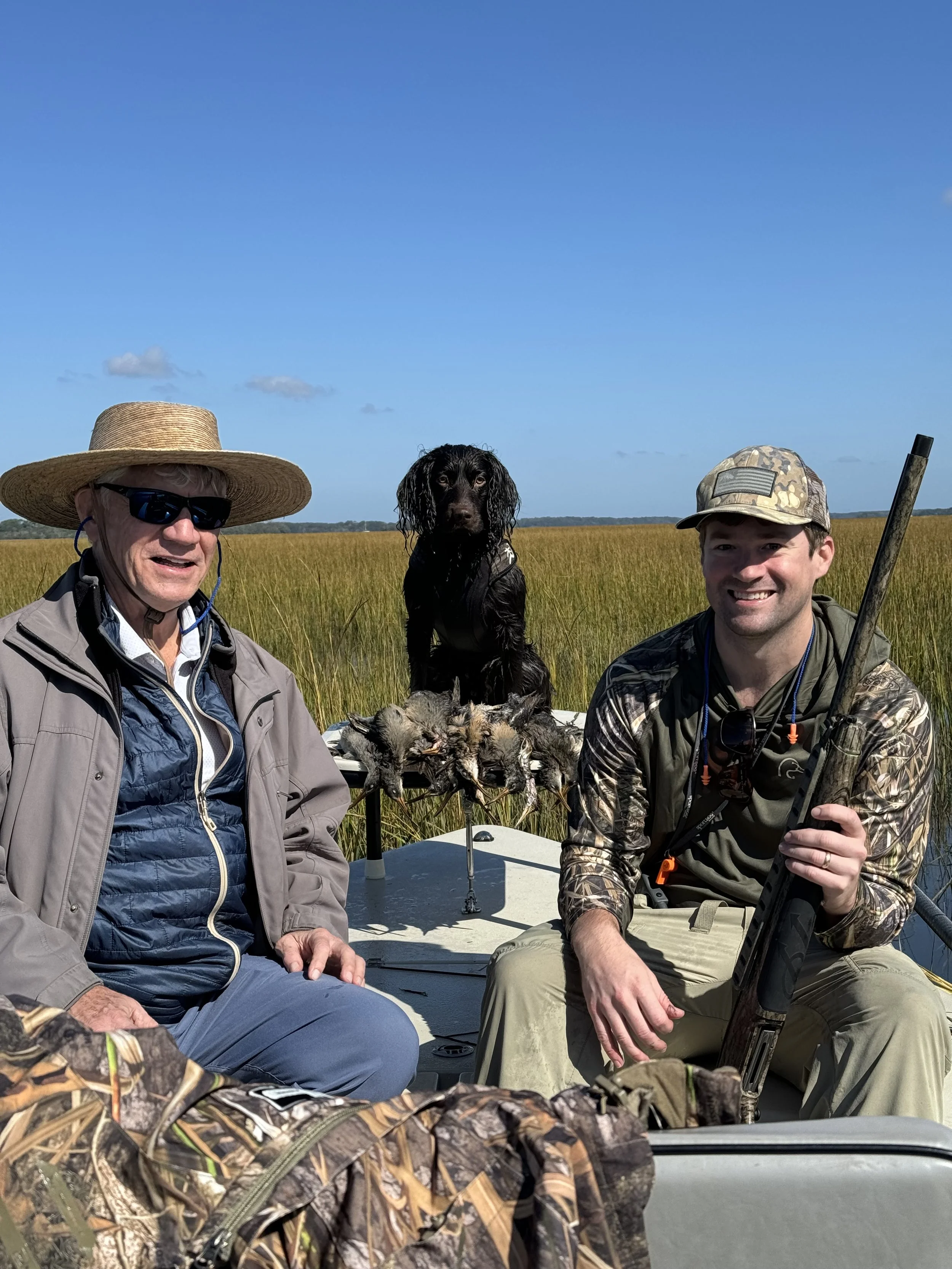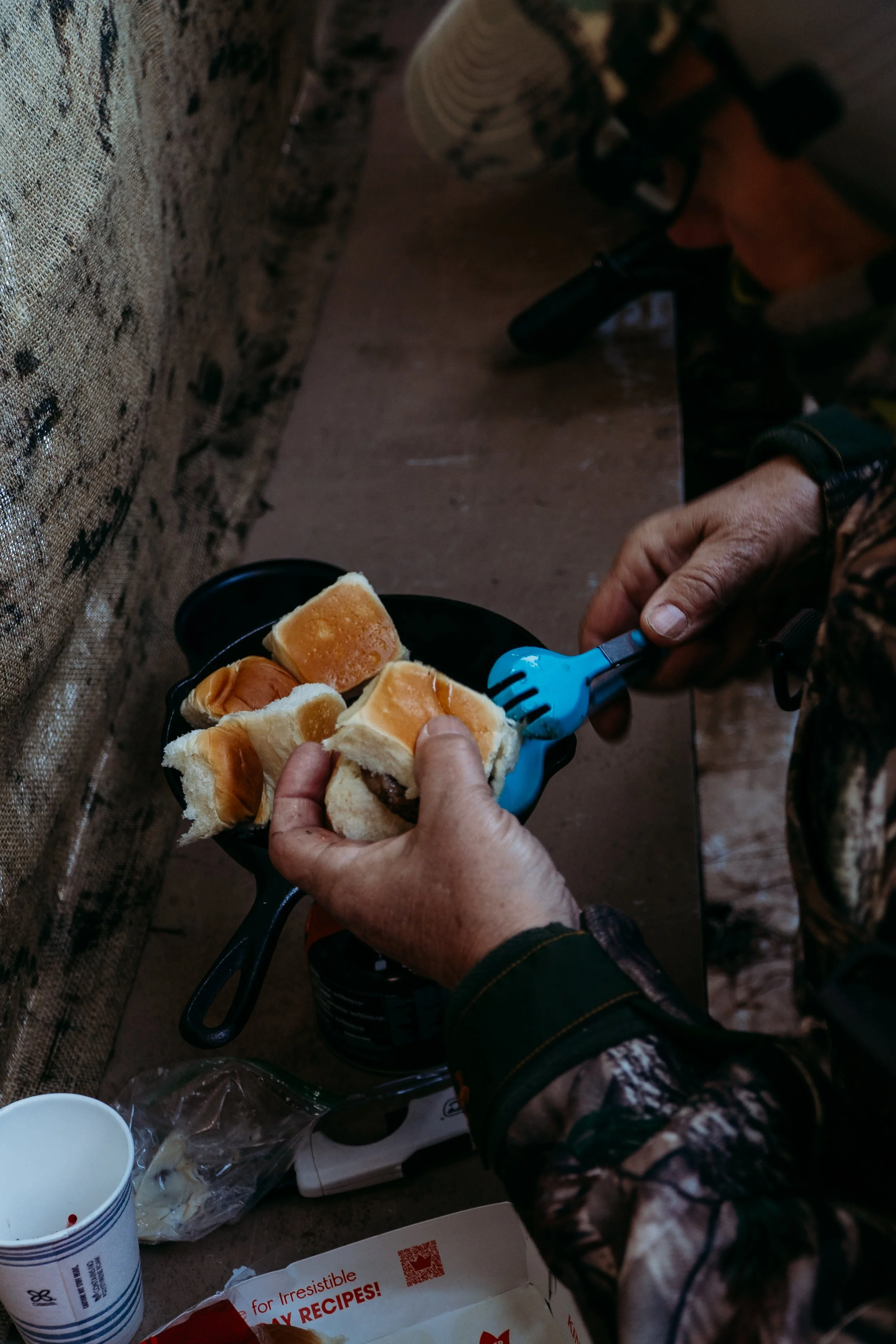A deep dive into marsh-hen hunting around Charleston, SC
If you grew up around the Lowcountry salt marshes, you know the sound: a sudden, rolling “kek-kek” from the cordgrass and a flash of a dove-sized bird slipping away. “Marsh hen” is the local name for rails — especially the clapper rail — and chasing them in fall flood tides is an old Lowcountry ritual. Below I’ll cover what the birds are, the common misconceptions (are they endangered?), how hunters pursue them, and what to do with the meat
What species are we talking about?
Locally the term “marsh hen” most often means the clapper rail (Atlantic clapper rail), but a few other rails turn up in the region or nearby marsh types:
Clapper rail (Rallus crepitans / Rallus longirostris complex) — the classic salt-marsh marsh hen of the Atlantic and Gulf coasts. Small duck-sized, long-necked, secretive.
King rail — larger, prefers brackish/fresh marsh edges; less common in tidal Spartina zones but present in the region.
Virginia rail and sora — smaller rails that prefer fresher marshes and wetlands; they’re part of the broader “rail” bag on many state and federal regs.
The big misconception: “aren’t marsh hens endangered?”
Short answer: No — Atlantic clapper rails in the Southeast are not listed as federally endangered, though some rail taxa are endangered in other places and rails as a group face habitat pressures.
Important nuance:
Ridgway’s rail (a Pacific-coast relative once lumped with the clapper rail) and some local subpopulations on the West Coast have been listed as endangered; the Endangered Species listings people remember mostly concern those Pacific populations. That has caused confusion, because older literature called many birds “clapper rail” before taxonomic splits.
Atlantic/Gulf clapper rails remain subject to habitat-loss threats (marsh development, sea-level rise, storms), but they are generally managed as game species with regulated seasons in states like South Carolina. Partners in Flight and ornithological accounts note concern about habitat trends even where numbers aren’t currently on the endangered list.
How do hunters chase marsh hens around Charleston?
Rail hunting is a unique Lowcountry pursuit
Timing is everything. Flood tides that push into the marsh force rails up onto the little hummocks of Spartina and narrow channels where you can see or flush them. Hunters often plan around big flood tides (full/new moon) and tropical swells in fall.
Method: small, flat-bottom skiffs poling along creek edges. Walked drives along marsh ridges and paired push-pole/poling techniques are also used. Dogs are sometimes used but the terrain is wet and dense.
Gear: 20-gauge is popular for the light, quick shots at rails; steel shot (see local regulations), camo and waders/boots, long-handled landing nets if you expect to retrieve birds from water. Know your local navigation channels — marshes hide oyster bars and shallow holes.
Etiquette & safety: be mindful of private property, oyster leases, and boat traffic; communicate with local guides if you’re new to the marshes.
Cooking marsh hens: taste and recipes
Marsh-hen meat gets a bad rap, but properly prepared it can be enjoyable — lean, dark, and a little gamey (some say “fishy” if not handled well). The key is proper cleaning and technique:
Prep: many hunters recommend skinning (don’t pluck), parboiling briefly in salted water with a splash of vinegar to remove blood and strong flavors, then finish in a pan or stew.
Popular preparations: pan-fried halves (breast half + thigh half), pot pies, confit or slow braises, gumbo additions, or smoked and then used in a hearty stew. Elevated Wild and other hunter-cook sites have rail pot-pie and pot-stew style recipes that show how to get the best from the small breasts and rich thighs.
Yield: rails are small (often ~1 pound whole), so harvest enough for a family meal or combine with other game/fish in recipes.
A practical note: because rails are small, plan recipes that use small pieces, shredded meat, or combine rails with other ingredients (dumplings, pie, gumbo) instead of expecting big single-breast entrees.
Conservation, ethics, and local culture
Marsh-hen hunting is steeped in Lowcountry tradition. That said:
Follow the rules. Seasons and bag limits exist to keep harvest sustainable and to avoid accidentally taking protected taxa. Always carry your licenses and the latest regs.
Respect habitat. Coastal marshes are under pressure from development and sea-level rise; minimizing disturbance, avoiding sensitive nesting times in spring, and supporting marsh conservation helps keep the tradition alive.
Know your birds. Because taxonomic changes caused confusion in the past (and because endangered rails exist on other coasts), learn the local field marks and regulatory lists so you don’t harm protected populations by mistake.
Quick reference / resources
SCDNR migratory bird seasons & limits — official season dates and bag limits (always consult before hunting).
AllAboutBirds / species pages — clapper rail and related species for ID and natural history.
FWS pages on Ridgway’s rail / endangered rail taxa — explains which rail taxa are federally endangered (mainly Pacific populations).
Regional hunting writeups (Project Upland, Carolina Sportsman, Garden & Gun) — practical hunt descriptions, tide-timing, and cultural perspectives.



